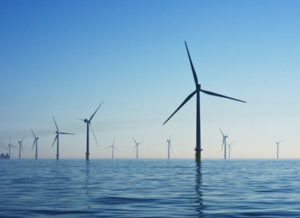November 19, 2020
Today, the European Commission announced that Europe needs 25 times more the current capacity offshore wind by 2050. To make the best out of this green energy, the right infrastructure will need to be in place. The gas infrastructure will play its part in transporting large volumes of renewable hydrogen and ensure seasonal storage of hydrogen for the times when wind is not blowing.

Boyana Achovski, Gas Infrastructure Europe (GIE) Secretary General, stated: “It’s good to see the excellent work of the European Commission in putting forward the Offshore Energy Strategy. This is a steppingstone that will bring us closer to Europe’s decarbonisation objective. This foreseen huge increase in the offshore wind energy will bring more renewable hydrogen to the European shores allowing millions of citizens to benefit from it. The gas infrastructure is ready to support the wind sector to unleash its full decarbonisation potential by carrying its renewable hydrogen. Together we will help scale up hydrogen and deliver the EU Green Deal.”
In the same spirit, Giles Dickson, CEO WindEurope, commented: “The EU Offshore Renewable Energy Strategy is an excellent blueprint for the expansion of offshore wind in Europe. Can the wind industry deliver the 25x increase in offshore wind it envisages? Yes, we can – with the right investments in infrastructure and the supply chain. Offshore wind will be the no. 1 source of electricity in Europe. And it will play a key role too in renewable hydrogen. And we will need hydrogen as well electricity infrastructure to get the renewable hydrogen to the industrial and other consumers who want it.”
The planning of energy infrastructure will need to be holistic and coordinated. Large-scale electricity and gas infrastructure projects, both offshore and onshore, domestic and cross border will be key for sector integration. And the lowest cost for society needs to be central when deciding on the appropriate infrastructure. The flexibility of the energy system will also be important – converting power to molecules in form of hydrogen helps balance electricity demand and supply. The retrofitted and repurposed gas infrastructure will take over hydrogen and will bring it where it is needed. This avoids overinvestments in electricity cables; and not only it helps making the best use of renewable offshore generation, but also accelerates it.
The European gas infrastructure is well-spread across Europe from south to north, from east to west: it has 2,2 mln km gas pipelines, 1,200 TWh underground storage capacity and around 240 bcm regasification capacity of large-scale LNG terminals. Pipelines can transport hydrogen over long distances across Europe at least costs. Europe can strengthen its global leadership in hydrogen by combining storage capacities and renewable energy available in Europe – Europe has a technical salt cavern hydrogen storage potential of 85 PWh. Import terminals can connect Europe to global hydrogen markets and will enable hydrogen and hydrogen carriers shipment within Europe.
“We need coordination in the energy sector and amongst infrastructure operators handling different energy carriers. In general, looking at the European Commission’s ambition of 230-450 GW offshore before 2050, Power-to-X and hydrogen infrastructure will be a prerequisite for an optimized utilization of the resources. The uncertainty in terms of future supply and demand of hydrogen, adds a premium financial risk, which can be mitigated through right policy measures at the EU and national level.” Boyana Achovski of GIE added.
Learn more about the teaming up of gas infrastructure and wind sector by accessing GIE messages on the role of the gas infrastructure in the wide deployment of offshore renewable energy.
Gas Infrastructure Europe (GIE) is the association representing the interests of European gas infrastructure operators active in gas transmission, gas storage and Liquefied Natural Gas (LNG) regasification. GIE is a trusted partner of European institutions, regulatory bodies and industry stakeholders. It is based in Brussels, the heart of European policymaking. GIE currently represents 70 member companies from 26 countries. GIE’s vision is that by 2050, the gas infrastructure will be the backbone of the new innovative energy system, allowing European citizens to benefit from a secure, efficient and sustainable energy supply.
Downloads
Press contact:
Gabrielle Lelievre
Communication Advisor
T +32 478 78 34 83
gabrielle.lelievre@gie.eu















































